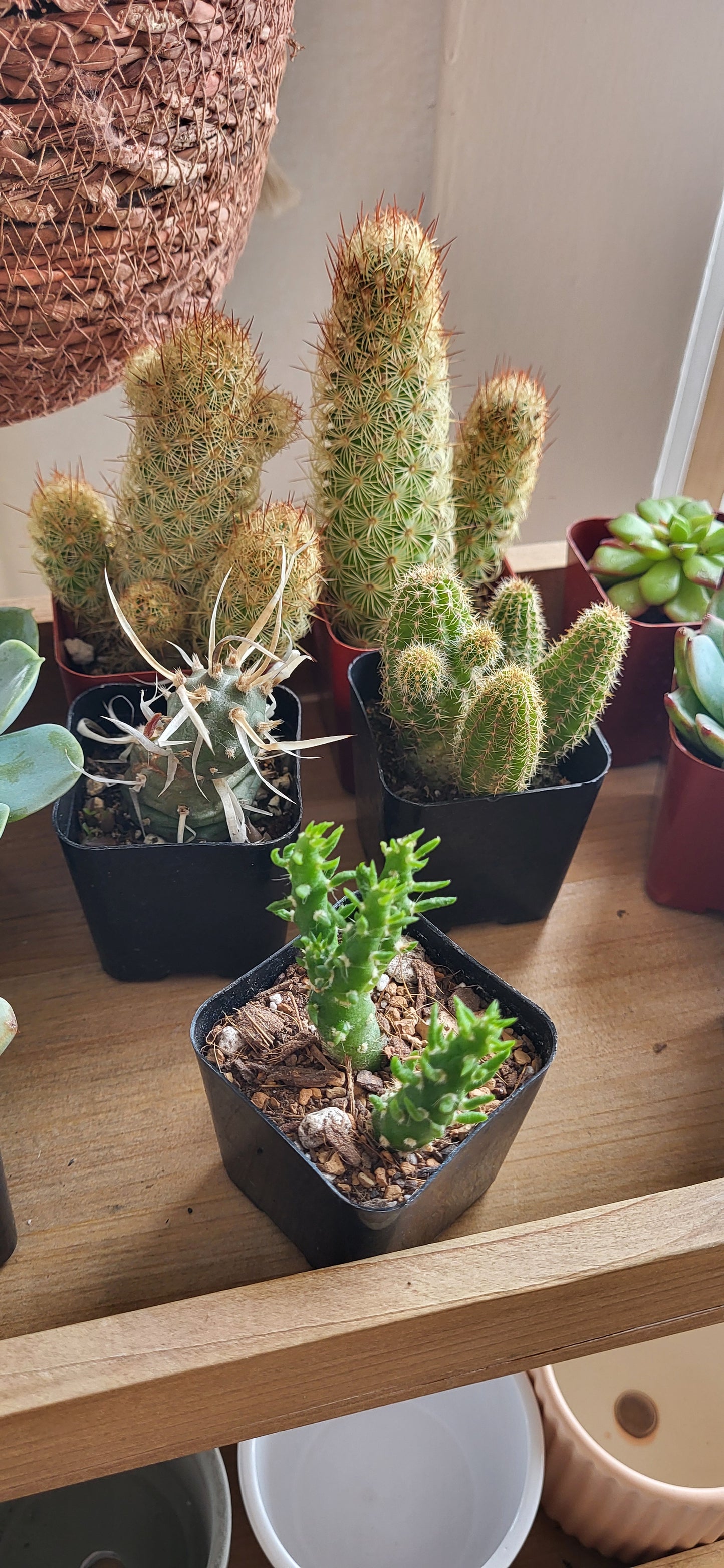Calabrese Greenhouse, Inc.
Assorted Cactus 2.5"
Assorted Cactus 2.5"
Couldn't load pickup availability
Indoor Cactus Care
Among the toughest of all houseplants, desert and forest cacti have a unique, stark beauty, making them a statement piece for any windowsill or brightly lit room. Here are the main care requirements for growing an indoor cactus:
- Place indoor cacti in the brightest spot in your home.
- Prepare loose, well-draining soil or plant in a cacti mix.
- Only water once the soil is completely dry; err on the side of underwatering.
- Water and feeding can be cut down in the winter, when the plant goes dormant.
- Pruning usually isn't necessary unless growth needs to be regulated.
Light
Cacti require four to six hours of bright sunlight daily. However, some species of both desert and forest cactus can burn in direct sunlight. Locate your cactus near a sunny window, and opt for a spot that receives filtered bright light in the summer and direct light (like a south- or west-facing window) in the winter.
You can move your cactus outdoors during the summer to provide ample light requirements, but do so only when night temperatures warm to 50 degrees Fahrenheit or above.
Soil
Desert cacti grow best in a fast-draining soil mix specifically formulated for cacti. They also grow well in regular potting soil amended with sand, pebbles, or perlite to increase drainage and aeration. Forest cacti likes well-draining soil, as well, but can often grow just fine in a regular potting mix.
Water
During the spring and summer, when your cactus is actively growing and blooming, give it a hearty drink every ten days, allowing the water to drain thoroughly. During the winter rest period, decrease waterings to once every four weeks (and every six weeks for some desert species). The soil should be dry to the touch in between summer waterings and mostly dry in the winter.
Temperature and Humidity
Cacti prefer hot temperatures, ranging from 70 to 80 degrees Fahrenheit. In the winter, the plant prefers a cool-down period, with temperatures hovering near 55 degrees Fahrenheit. In its natural habitat, a desert cactus is accustomed to very chilly nights and some species can even withstand nights that dip to 35 degrees Fahrenheit. Still, any indoor plant that's not hardened off needs to be protected from winter drafts.
Cacti prefer average humidity levels, which are fairly easy to achieve in most homes. Forest cacti like the air slightly more humid than desert varieties. So if you see your succulent plant wilting, mist it occasionally.
Fertilizer
Cacti can survive some of the harshest conditions on earth. Any effort to fertilize is welcomed but is not necessary. Some gardeners yield poor results with standard houseplant fertilizers (probably due to the improper ratio of nutrients), so seek out a specialized organic cacti fertilizer that contains more phosphorus than nitrogen.
Fertilize your cactus two to three times a year, only during the growing season, and refer to the manufacturer's recommended amounts. Reduce or eliminate fertilizer during the winter.
Share


